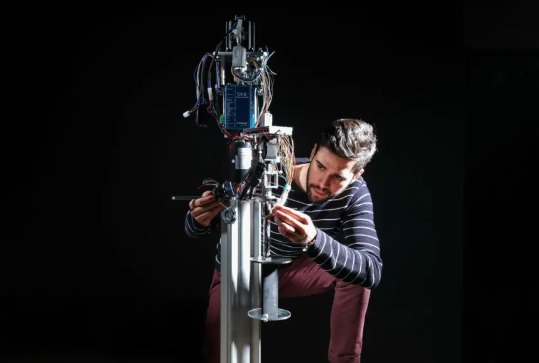World News26.04.2024
Swiss researchers boost efficiency of vertical axis wind turbines

QAZAQ GREEN. Vertical wind turbines could produce more electricity if optimised with tweaks identified by Swiss researchers, Swiss Info reports.
As they are quieter, require less space and are less dangerous for birds, such vertical wind turbines could compete with conventional models in the long term, the Swiss National Science Foundation (SNSF) announced on Wednesday.
Vertical wind turbines have been around for some time. However, their development has faced challenges in terms of physics, according to the SNSF. As their axis of rotation is perpendicular to the wind, the angle between the wind and the rotor blades is constantly changing. As soon as the wind reaches a certain speed, a phenomenon known as “dynamic stall” occurs, resulting in air vortexes and turbulence.
In a study published in the journal Nature Communications, a research team from the Swiss Federal Institute of Technology in Lausanne (EPFL) led by Karen Mulleners has now demonstrated a solution to this problem: they installed a device that allows the rotors to change their tilt.
“A ship needs a crew to adjust the sails in order to stay on course,” explained Sébastien Le Fouest, first author of the study, in the press release. “If you equip the rotor blades of wind turbines with small motors, you effectively provide them with a captain so that they too can adapt to the conditions.”
Efficiency multiplied
The researchers have built a miniature turbine with a single rotor blade. They equipped it with sensors to measure the energy generated in the flow channel. This enabled them to determine how strongly the rotor blades should adapt.
In this way, the researchers increased the efficiency of their vertical wind turbine in the laboratory threefold.
“Our data shows that it is very likely that the service life and efficiency of traditional wind turbines could be matched or even exceeded,” says Fouest. This is now to be investigated in further research projects.
A collaboration with a Swiss company has already been initiated to test the results on an industrial prototype, according to the SNSF.
Advanced 'high-density waterless hydro' energy plant gets green light
Eurostar aims to have all their trains powered by renewable energy by 2030
‘World’s first’ wooden wind turbine blades installed in Germany
Natron to kick off mass-production of long-life sodium-ion batteries
Tajikistan intends to fully switch to renewable energy sources by 2032 - deputy PM
Floating solar can power Africa’s energy goals, study finds
South Korean сompanies to modernize Kazakhstan's power plants, and GRES Topar
Decarbonization and sustainable development to take center stage at the 11th Annual Downstream Central Asia & Caspian Conference
Renewable electricity share in Turkey nears 50%
Sinn Power plans groundbreaking floating photovoltaic system in Bavaria
Swiss researchers boost efficiency of vertical axis wind turbines
Rapid expansion of batteries will be crucial to meet climate and energy security goals set at COP28
Georgia acquires first floating solar power plant
Wind turbine blades get a sustainable upgrade
China restricts offshore solar PV projects to specific sea areas
Biden announces $7 billion for solar energy in low-income communities
Production of a solar energy storage battery has started in Vilnius
Ainur Sospanova: Clear rules are needed for functioning of bilateral contracts market
Process to submit applications for RES auctions to construct HPPs and WPPs has commenced in Kazakhstan
JinkoSolar recognized as a Tier 1 Energy Storage Provider by BNEF












